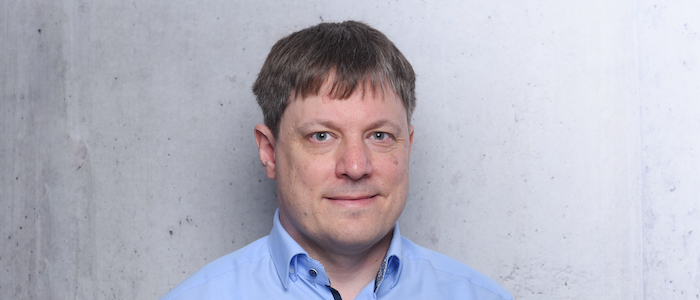Thorsten Auth

Forschungszentrum Jülich
Theoretical Physics of Living Matter
IBI-5/IAS-2
52425 Jülich
Thorsten Auth
... is a theoretical physicist working on biophysics and soft matter. He graduated from Goethe University Frankfurt in and then moved to Forschungszentrum Jülich for working on his doctoral thesis project. He studied effective rigidities of polymer-decorated amphiphilic monolayers layers in oil-water microemulsions as part of a collaboration with colleagues at the Institute for Neutron Scattering in Jülich and at the Institute of Physical Chemistry in Cologne. He obtained his Ph.D. degree at University of Cologne. After a short postdoc stay at Forschungszentrum Jülich, he worked as a postdoc on active fluctuations of red blood cells at Weizmann Institute of Science in Israel. In 2007, Thorsten Auth returned to Forschungszentrum Jülich where he now works as a staff scientist in the Institute for Theoretical Physics of Living Matter. He focuses on numerical calculations and computer simulations to predict the interaction of membranes with nano- and microstructures and on active matter.
since 2007 Staff Scientist at Forschungszentrum Jülich
2005-2007 Postdoc, Weizmann Institute of Science, Israel
2004 Postdoc, Forschungszentrum Jülich
2004 Dr. rer. nat., University of Cologne
Research synopsis
We study various aspects of (bio-)membranes on the mesoscale—often in jointly together with other colleagues at the institute for Theoretical Physics of Living Matter at Forschungszentrum Jülich. One major research focus relevant for our “Physics of Parasitism” project is the wrapping of nano- and microparticles by lipid-bilayer membranes. Here, we calculate wrapping energies and predict wrapping states of particles with the help of triangulated membranes and energy minimization. This will also allow us to predict forces and shapes that occur upon invasion of Apicomplexa into host cells, which is Project 2 of the SPP 2332.
Using a continuum model for biomembranes and mostly numerical calculations, we have originally started by studying the interaction of hard non-spherical particles with planar membrane patches, the latter representing the membrane of giant unilamellar vesicles. In particular, we also considered egg-shaped particles and discussed—in collaboration with parasitologists—the wrapping energies in the context of Plasmodium merozoites invading red blood cells. We then continued to look at more complex systems by adding further aspects that are relevant for biological cells. This includes characterizing the wrapping of spherical particles at the membrane of small non-spherical vesicles, taking into account for an osmotic-pressure contribution to wrapping, and performing computer simulations for receptor-mediated adhesion.
Using Brownian dynamics simulations, we have characterized phases and dynamics of active matter. We studied systems of filaments propelled in two dimensions (e.g. motility assays of actin and microtubule filaments propelled on a bed of motors), bacteria with quorum sensing that slow down in dense environments, mixtures of cytoskeletal filaments and molecular motors, and active vesicles that enclose self-propelled particles. In active vesicles, the self-propelled particles can be considered to mimic forces exerted by cytoskeletal filaments on the plasma membranes of biological cells. We showed that active vesicles can resemble shapes and fluctuations of membranes of biological cells, as well as cell motility on planar substrates.






